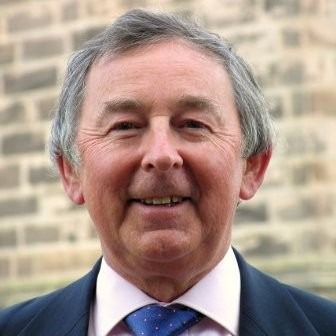Speaker profile

Prof. Ian Robson
Available for booking

Preston, Lancashire, England

Will travel anywhere in the UK

Professional Astronomer
Summary
Professor Robson has a broad history of involvement with astronomy organisations and is a keen presenter on astronomy topics.
Affiliations
Lectures
The Pluto Story
This talk gives an overview of the Solar System, especially the data regarding Pluto, and how this ultimately led the IAU in 2006 to declassify Pluto from being a planet. Although ‘what is a planet’ might seem to be an easy question to answer, it turns out that the debate by professional astronomers was complicated and fractious. The twists and turns of those two weeks in 2006, culminating in the final vote at the IAU are revisited on a personal basis – astronomical democracy in action – or not?
Supercool Astronomy
Supercool Astronomy is only about 40 years old and is the study of the very cold objects in space, especially the study of the dust emission that so often shrouds the secrets of star and galaxy formation. This is the realm of submillimetre astronomy and has been a huge British success story with many of the breakthroughs being undertaken by UK astronomers, especially through ground-breaking discoveries of the ‘SCUBA revolution’. Submillimetre astronomy is a prime example where huge scientific achievements have been driven by major technological advances in a very short space of time. The talk will discuss how submillimetre astronomy developed, the role of the UK and how it is now very trendy and totally supercool.
Active Galaxies and Supermassive Black Holes
Active Galaxies are the most powerful objects in the Universe. They shine with the light of hundreds or thousands of normal galaxies, and this light is concentrated from an extremely small volume of space, about the size of our Solar System. This tremendous energy output is due to the presence of a supermassive black hole, between a million and a thousand million times more massive than our Sun, lurking at the centre of the galaxy. The gravitational attraction of the black hole sucks surrounding material into it and in the process creates the light energy that we now recognise as an active galaxy. The highly illustrated talk will describe the key aspects of active galaxies, give a very simplified overview of black holes, how they form and how they provide the power, and will show how activity in galaxies may be a natural part of evolution. The talk will also include a look at our own Milky Way Galaxy and the evidence for a supermassive black hole at its centre.
Confessions of an Astronomer
This is a light-hearted and personal look at the life of a professional astronomer. In addition to the research and teaching, perhaps surprisingly, it can be packed with ‘interest’ in the widest sense of the word. The talk contains many amusing and exciting anecdotes; from being marooned with a steaming helium dewar in a cablecar in the Pyrenees, flying in an RAF Comet above the North Sea at 45,000ft and many exploits in Hawaii. The talk covers a wide range of astronomy, is lavishly illustrated and contains not a single equation!
It’s a Hot Big Bang Universe
The Cosmic Microwave Background (CMB) radiation was the last nail in the coffin of the Steady State cosmological theory of the Universe and resulted in the Hot Big Bang model that we understand today. However, the story of the discovery of the CMB was a story of theoretical prediction, careful measurement, pipped-at-the-post experiments and controversy but which subsequently led to two Nobel Prizes. This talk illustrates the highlights of the experimental and theoretical progress from the time of Hubble’s discovery of the expanding Universe to the present day and gives a personal inside view of the ups and downs of one of these challenging experiments in observational cosmology.
The Discovery of Quasars
Quasars are the most powerful bodies in the Universe and we now know that they are the extreme of Active Galaxies, powered by a supermassive black hole at their centre. However, the story of their discovery is one of missed opportunities, the advent of radio astronomy, careful observational measurements, and a fierce fight between two groups of astronomers before the truth was finally accepted. This talk describes the ins and outs of this story, the personalities involved and gives an insight into how quasars are powered and the fact that supermassive black holes are almost ubiquitous in the Universe.
The Changing Scene in Astronomy
Since the first use of the telescope in 1609 astronomers have made amazing discoveries about the Universe in which we live. Technological improvements have meant bigger and better telescopes and novel instruments spanning the entire electromagnetic spectrum and beyond. This talk gives an illustrated overview of this development and the discoveries that have led to our current knowledge of the Universe and concludes with the onset of ‘Big Data’ in modern astronomy and the changing scene facing astronomers today.



